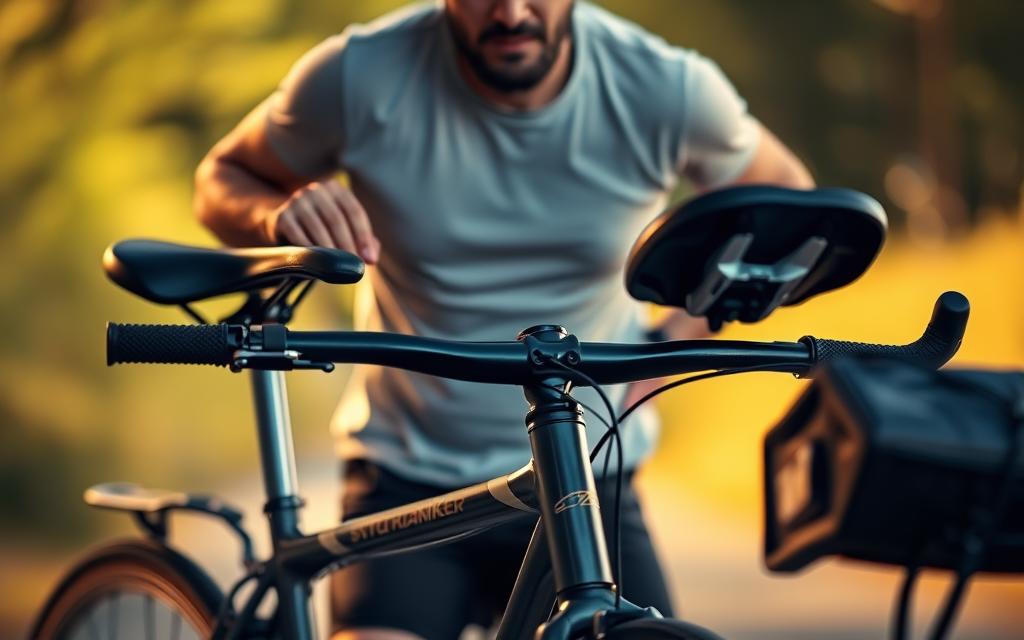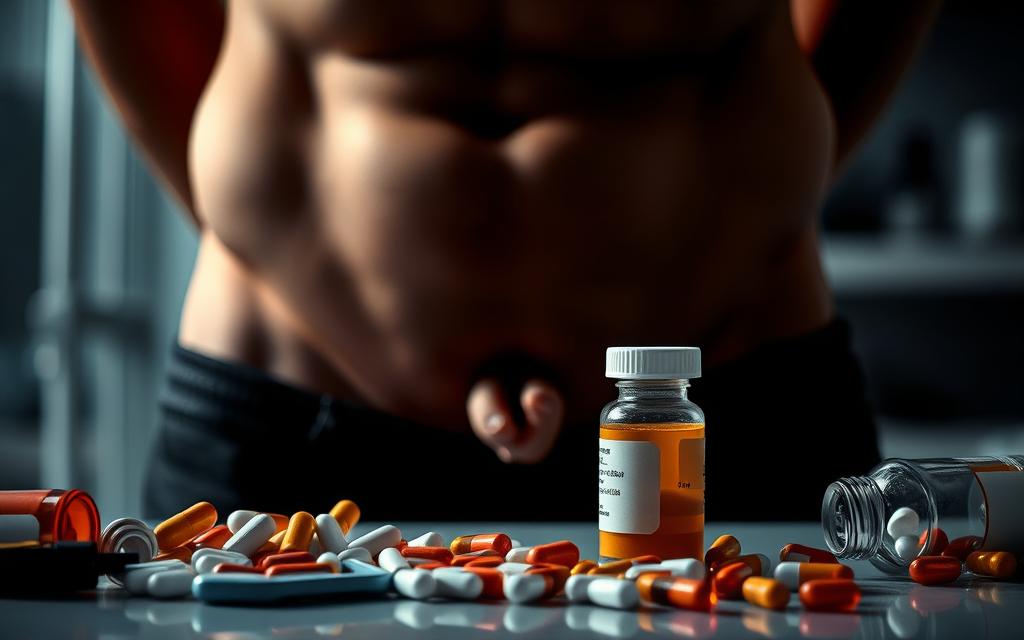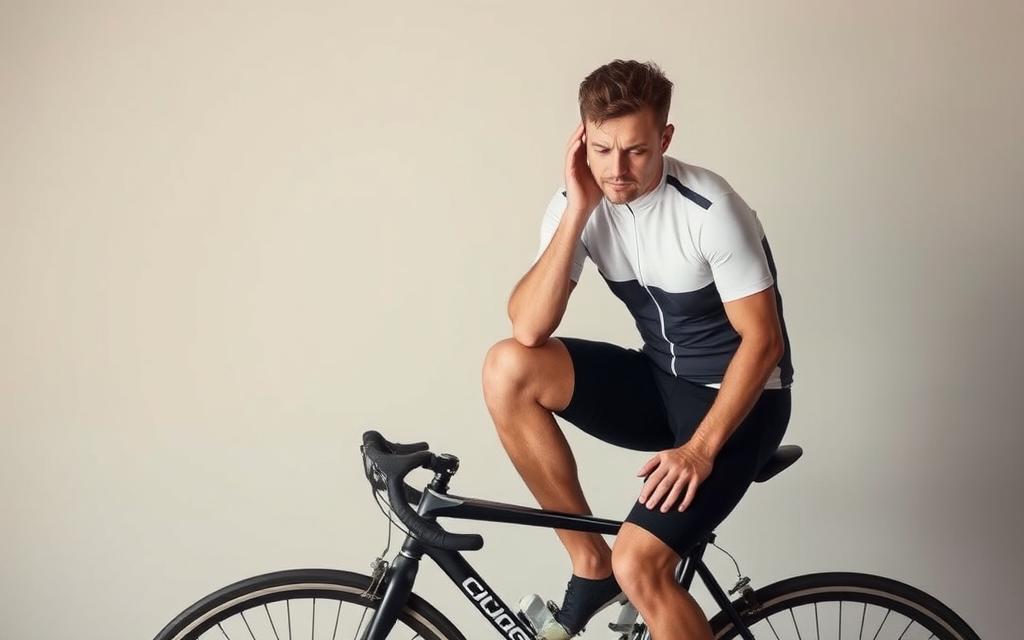Can Cycling Cause Erectile Dysfunction? Understanding the Risks and Solutions
Cycling is a popular activity that offers numerous health benefits, but concerns have been raised about its potential impact on erectile function. The relationship between cycling and erectile dysfunction is complex, involving factors such as bicycle seats and pressure on the perineal nerves and blood vessels.
Prolonged pressure on these sensitive areas can lead to numbness and decreased sensitivity, potentially affecting erectile function. However, it’s essential to understand that not all cyclists will experience these issues, and there are steps that can be taken to mitigate the risks.
By exploring the link between cycling and erectile health, we can better understand the potential risks and identify practical solutions for cyclists.
The Connection Between Cycling and Erectile Dysfunction
As cycling continues to grow in popularity, understanding its potential effects on erectile health is crucial. Cycling, while an excellent form of exercise and recreation, has been linked to erectile dysfunction (ED) in some studies.
How Bicycle Seats Compress Perineal Nerves and Blood Vessels
The mechanical pressure exerted by bicycle seats on the perineal area is a significant concern. This pressure can compress both the perineal nerves and blood vessels, potentially leading to numbness, pain, and, in some cases, erectile dysfunction. The perineal nerves play a crucial role in erectile function, and their compression can disrupt normal erectile processes.

Research on Cycling and ED: What the Science Says
Numerous studies have investigated the link between cycling and ED. Research suggests that long-distance cycling, particularly on bikes with poorly designed seats, can increase the risk of developing ED. A study published in the Journal of Urology found that cyclists who rode more than 100 miles per week were at a higher risk of experiencing ED symptoms.
| Cycling Distance (miles/week) | Risk of ED |
|---|---|
| 0-50 | Low |
| 50-100 | Moderate |
| >100 | High |
Who’s Most at Risk: Frequency, Duration, and Riding Style
The risk of developing cycling-related ED is influenced by several factors, including frequency, duration, and riding style. Cyclists who ride frequently, for extended periods, and with improper bike fit or riding posture are at a higher risk. Adjusting riding habits and ensuring proper bike fitting can mitigate this risk.
Understanding these factors can help cyclists take preventive measures to protect their erectile health while continuing to enjoy the benefits of cycling.
Anabolic Steroids and Erectile Dysfunction: The Complete Picture
The use of anabolic steroids has become a concerning trend among athletes and bodybuilders, potentially leading to severe health issues, including erectile dysfunction. Understanding the risks associated with anabolic steroid use is crucial for individuals considering or currently using these substances.
Disrupting Testosterone Production
Anabolic steroids significantly impact the body’s natural production of testosterone. When exogenous steroids are introduced, the body reduces its own production, leading to hormonal imbalances. This disruption can result in a range of sexual health issues, including erectile dysfunction.
The Mechanism Behind Steroid-Induced ED
The mechanism by which anabolic steroids cause erectile dysfunction is multifaceted. It involves the suppression of natural testosterone production, leading to decreased libido and erectile function. Moreover, steroid use can cause changes in blood lipid profiles, potentially leading to vascular issues that further contribute to ED.

Recovery Timeline After Stopping Steroid Use
Recovery from steroid-induced erectile dysfunction can vary significantly among individuals. After stopping steroid use, it may take several months for natural testosterone production to resume. During this time, some men may experience persistent erectile dysfunction, necessitating medical intervention. For those seeking treatment, options such as Cialis for erectile dysfunction may be considered.
The Double Threat: Cycling While Using Performance Enhancers
Cycling, as discussed in previous sections, poses certain risks to erectile health due to the pressure exerted on the perineal area. When combined with anabolic steroid use, these risks are compounded. The dual stressors can exacerbate the likelihood and severity of erectile dysfunction, making it a double threat to men’s sexual health.
| Risk Factor | Impact on Erectile Health | Combined Risk with Steroid Use |
|---|---|---|
| Cycling | Pressure on perineal nerves and blood vessels | High |
| Anabolic Steroid Use | Disrupts testosterone production, leading to ED | Very High |
| Cycling + Steroid Use | Compounded risk due to dual stressors | Extremely High |
Recognizing and Addressing ED Symptoms for Cyclists
Erectile dysfunction can be a concerning issue for cyclists, but recognizing its symptoms is the first step towards a solution. Cyclists often experience a range of physical and physiological changes that can impact their sexual health. Understanding these changes and identifying early warning signs of ED can help cyclists take proactive measures.
Early Warning Signs You Shouldn’t Ignore
Cyclists should be vigilant about the following early warning signs of ED:
- Decreased libido: A noticeable decrease in sexual desire.
- Erection difficulties: Trouble achieving or maintaining an erection.
- Numbness or tingling: Experiencing numbness or tingling in the genital area.
Diagnostic Approaches for Cycling-Related ED
Diagnosing ED involves a comprehensive approach that includes:
- Physical examinations: Checking for any physical issues that might be contributing to ED.
- Hormonal testing: Assessing hormone levels to identify any imbalances.
When to Seek Medical Intervention
If cyclists experience persistent symptoms of ED, it’s crucial to seek medical help. A healthcare professional can provide guidance on the best course of action.
Physical Examinations
A thorough physical examination can help identify underlying issues such as nerve damage or poor blood circulation, which are common among cyclists.
Hormonal Testing
Hormonal testing is essential to determine if hormonal imbalances are contributing to ED. This involves checking levels of testosterone and other relevant hormones.
By understanding the early warning signs and diagnostic approaches, cyclists can take the first steps towards addressing ED. Seeking medical intervention when necessary is crucial for effective management and treatment.
Protective Equipment and Riding Modifications
To mitigate the risks associated with cycling and erectile dysfunction, riders can adopt various protective equipment and riding modifications. By making informed choices about their bicycles and riding habits, cyclists can significantly reduce the pressure on sensitive areas.
Ergonomic Saddle Solutions
One of the most critical factors in reducing the risk of erectile dysfunction is the design of the bicycle saddle. Ergonomic saddle solutions are designed to minimize pressure on the perineal area.
Pressure-Relieving Designs
Saddles with pressure-relieving designs, such as those with a cut-out or groove, can help reduce the pressure on the perineum. These designs allow for a more natural position of the body, reducing the risk of nerve compression.
Proper Width and Padding Considerations
The width and padding of the saddle are also crucial. A saddle that is too narrow can cause excessive pressure, while one that is too wide can cause chafing. Proper padding can enhance comfort without compromising on support.
Bike Fitting for Genital Health
Bike fitting is another essential aspect of reducing the risk of erectile dysfunction. A professional bike fitting ensures that the bicycle is adjusted to the rider’s body, minimizing unnecessary pressure.
| Bike Fitting Aspect | Benefit |
|---|---|
| Saddle Height | Reduces strain on the knees and perineum |
| Handlebar Height | Promotes a comfortable riding position |
| Saddle Position | Minimizes pressure on sensitive areas |
Riding Techniques to Minimize Pressure
Adopting the right riding techniques can also help minimize pressure. Standing up on the pedals periodically can relieve pressure on the perineum.
Recovery Practices Between Rides
Recovery practices are vital for maintaining genital health. Cyclists should incorporate regular breaks during long rides and consider post-ride recovery techniques such as stretching.
Maintaining Sexual Health While Enjoying Cycling
Cycling is a great way to stay physically active, but it’s essential to be aware of the potential risks to your genital health. As discussed, erectile dysfunction (ED) can be a concern for cyclists due to the pressure on the perineal nerves and blood vessels.
To minimize these risks, adopting a few simple practices can make a significant difference. Ensuring a proper bike fit, using ergonomic saddle solutions, and taking regular breaks during long rides can help reduce pressure on sensitive areas. For more information on addressing ED, you can visit resources like Colorado Urologists, which provides valuable insights into maintaining sexual health.
By being mindful of your riding style and taking proactive steps to protect your genital health, you can enjoy cycling while maintaining your sexual well-being. Regular exercise, a balanced diet, and adequate sleep also play a crucial role in overall health, including sexual function.
Cycling safely and being aware of the potential risks can help you enjoy this activity without compromising your genital health. By following these guidelines, cyclists can minimize the risk of ED and maintain their overall well-being.
